#21. It Began With Carved Hieroglyphs
It all began when a group of scientists took it upon themselves to scavenge the Abu Qir Bay F – a vast bay on the Mediterranean near the coast of Egypt – in search of a city that was lost 1200 years ago.
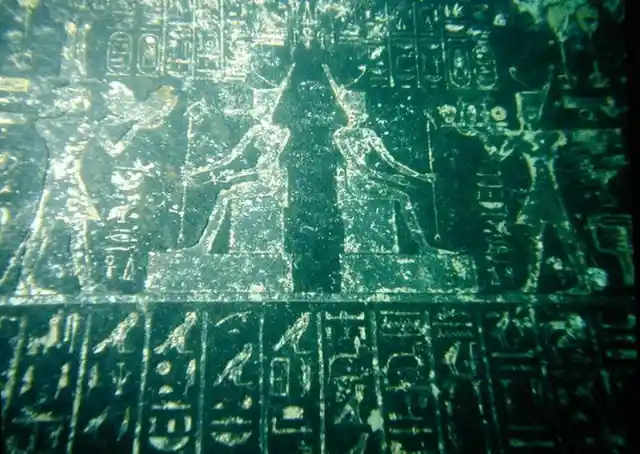
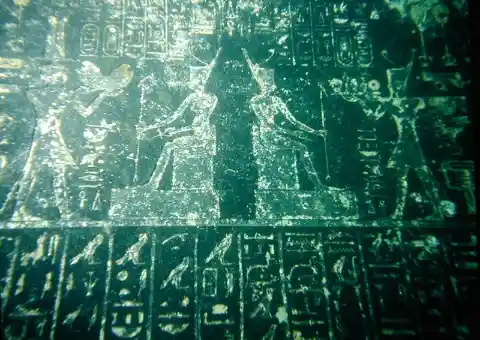
The place in question was once known as the city of Heracleion. Apparently, it held countless treasures, but there was never any trace of it... at least, not until now.
#20. Hidden Treasures
When divers came across whole structures and treasures, they new they'd hit the jackpot. The lost city of Heracleion was one history's greatest unsolved riddles.

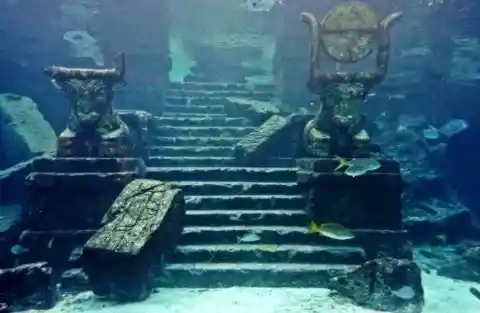
Little was known about it except that it was once one of the most important ports in Egypt. Trade was abundant and the city reached its height in the 5th century B.C.
#19. The Greatest City Sinks
While the city was truly spectacular, it wasn't build over solid foundations. As a consequence, several earthquakes sunk the whole place, as happened with many of the world's most ancient cities.


Historians were convinced that there was no way any of it could be salvaged. In fact, for thousands of years, there wasn't any trace whatsoever of this long-lost settlement.
#18. Surprising Discoveries Underwater
In 2000, a group of divers were pleasantly surprised when they unexpectedly came across huge sculptures, torsos and riches. Where had they come from?
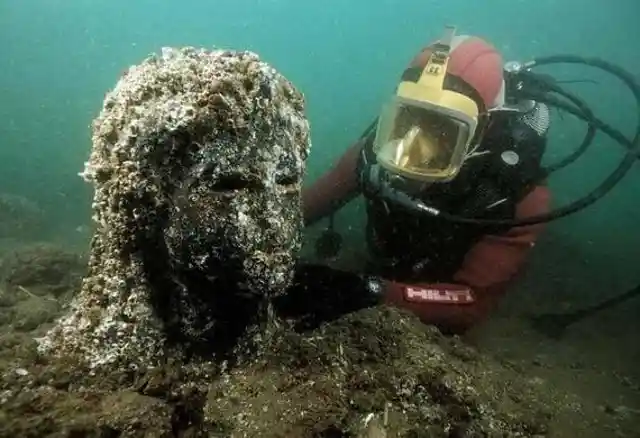
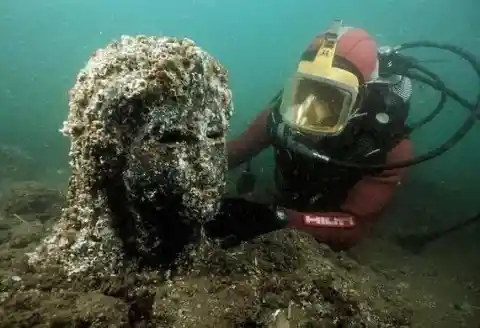
In that very moment, Franck Goddio, the archaeologist on board, new exactly what this was about. Word got out and suddenly the whole world was looking in on the sudden discovery.
#17. Unique Sculptures
One of the first things the scientists came across was a stunning number of beautiful and relatively well-preserved sculptures and other decorative artifacts.
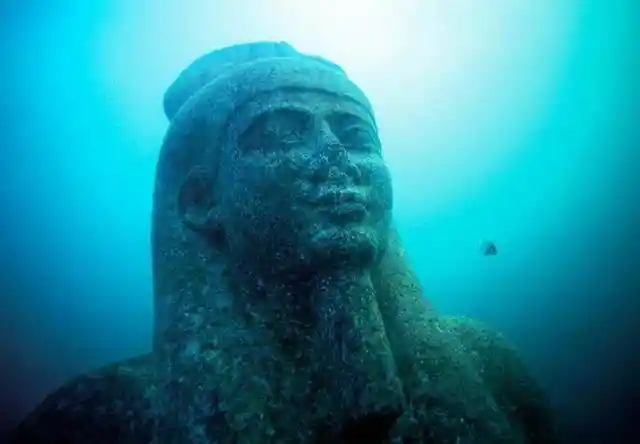
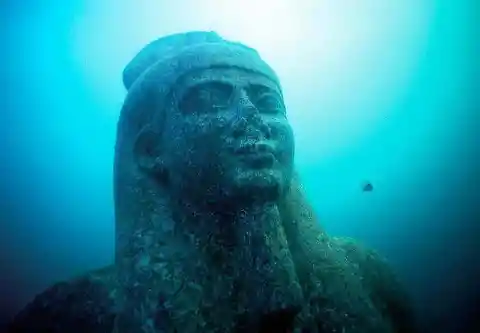
Some were made of plain stone but others incorporated far more luxurious metals. With the help of some historians, the sculptures were identified as gods that were worshiped.
#16. Another Shocking Discovery
The numerous busts and heads that were discovered in the depths of the ocean baffled historians and scientists worldwide. On top of that, ornaments and statues crafted in precious stones were found near the temples of worship.
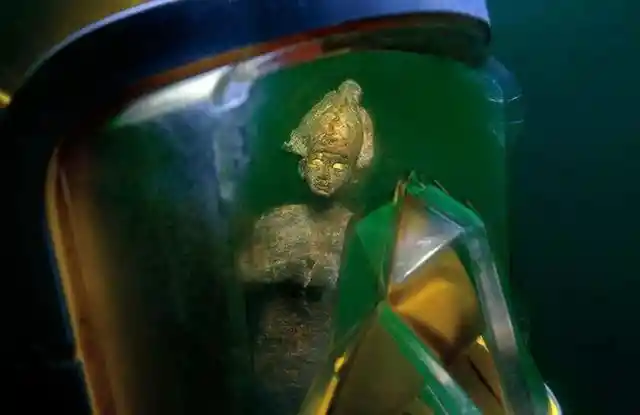
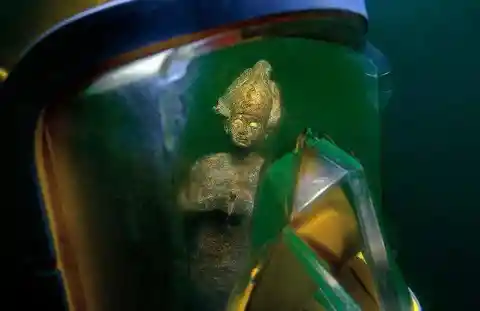
The image above shows a beautiful statue of the God that locals called Hapi. Back in the day, Hapi was believed to be responsible for nature's most devastating phenomenons, especially floods.
#15. The Rescue Begins
One by one, the amazing items found in the sea were recovered. In order to do this, the crew on board had to be more than careful. After all, they were handling ancient and very delicate relics.
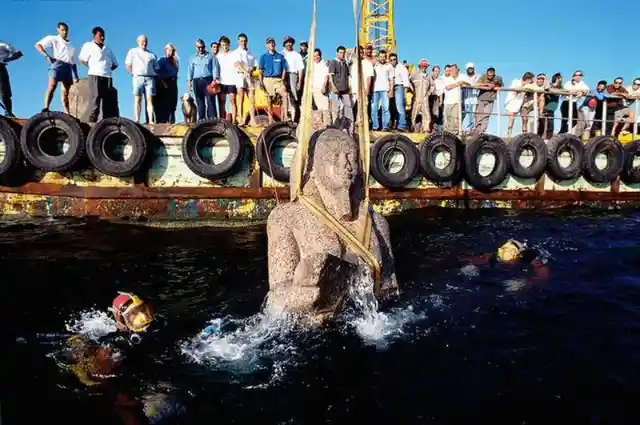
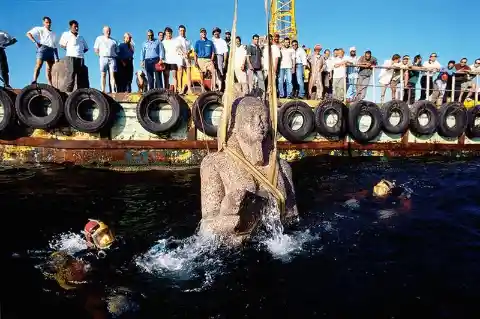
The image below shows how the divers and scientists together managed to pull out some of the bigger statues, which were naturally more difficult to maneuver.
#14. A Lion-Shaped Statue
Once the divers found parts of statues, the search for more parts of the lost city intensified. Their efforts were finally rewarded, when they came across a huge structure.
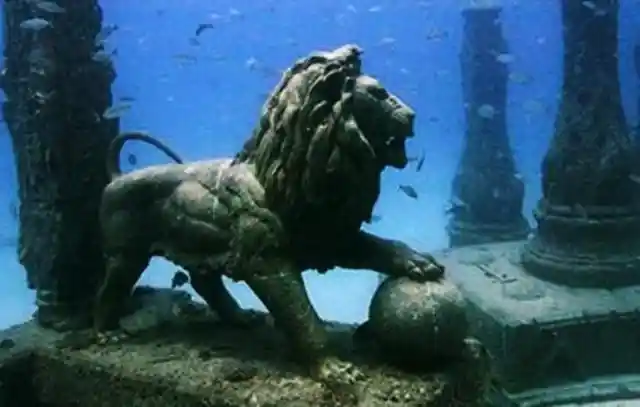

They discovered a giant statue that depicted a lion, and this led them to more amazing discoveries. The only problem was that this required further efforts in order to salvage everything.
#13. Unanswered Questions
As all the great relics were being pulled out of the ocean, scientists couldn't help but wonder what exactly could have caused the demise of such a grand city as the one they had at hand.
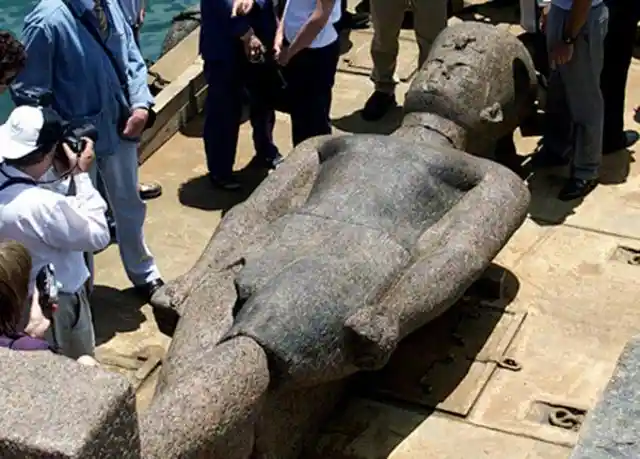

Many of the statues they had found were broken in pieces, which were in turn scattered throughout the deep waters. This meant that the scientists wouldn't rest until they found a way to recover every missing arm or strand of hair.
#12. Puzzle Solved
Thanks to the hard work of a team of specialists and after endless hours of hard labor, many of the artifacts and statues were successfully and entirely restored.
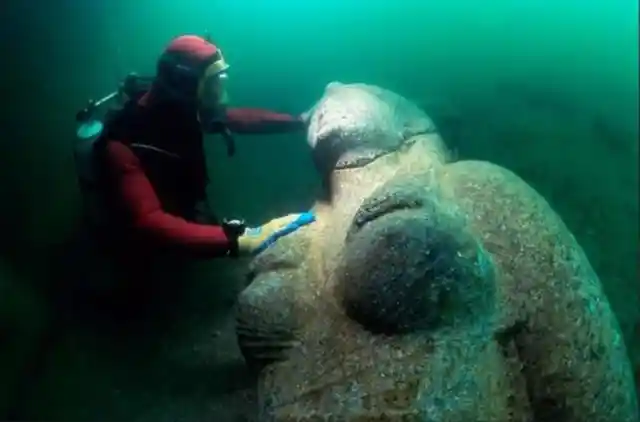

In order to understand just how difficult this task was, you should take into account that some of the relics were broken up into at least 17 pieces.
#11. Gold Hidden Amongst The Rubble
While some ancient relics were found in pieces, others were intact. As divers scavenged the depths of the bay more thoroughly, they came across all sorts of valuable objects.
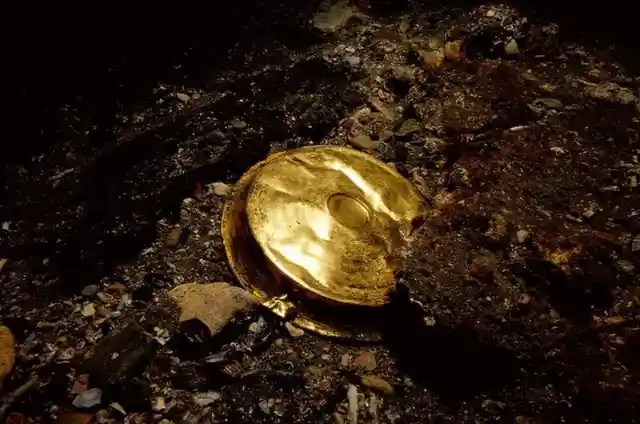
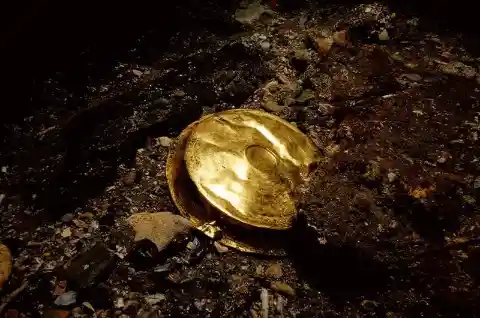
The most shocking example is the saucer in the image above. It is made of pure gold and was clearly meant to be used by the wealthiest families.
#10. Ancient Tombs Prove To Be A Challenge
The art and scientific communities were already overboard when the discoveries reached the international news. However, just when they thought things couldn't get any better, they found a huge tomb.

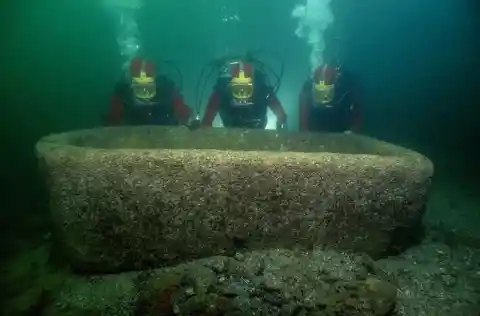
When they tried to lift the incredible tomb, they realized it was impossible. To their great personal grief, they had no choice but to leave the unknown object at the bottom of the ocean.
#9. Hidden Gold
The group of divers came across yet another mysterious finding that left them baffled, even though it looked rather unappealing from the outside. It appeared to be an insignificant stone, but it was actually filled to the brim with gold.
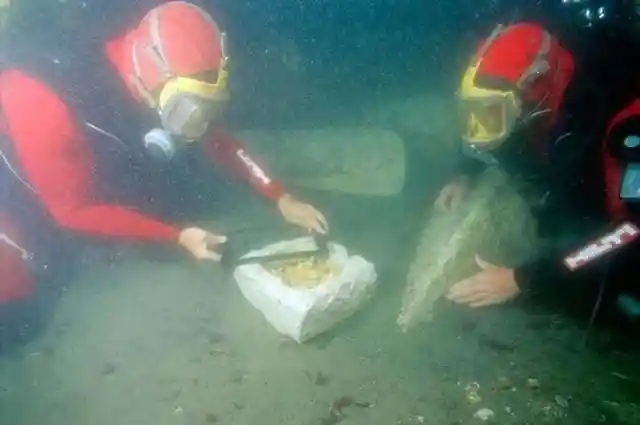
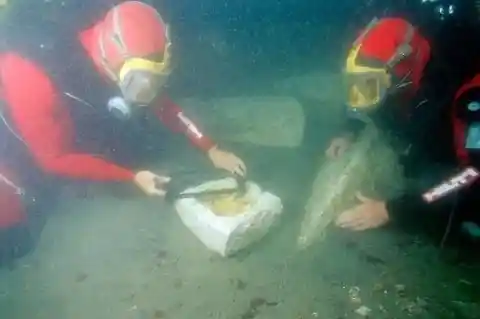
Different theories have tried to explain this, but the likeliest explanation is that somebody was trying to keep the inside contents safe.
#8. A Magnificent City
The head scientist that was responsible for this whole discovery was Franck Goddio. Easy to say, he was over the moon and planned to enjoy every step of the way.
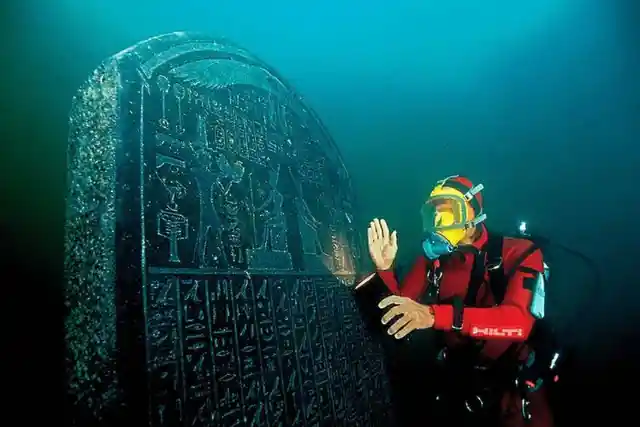
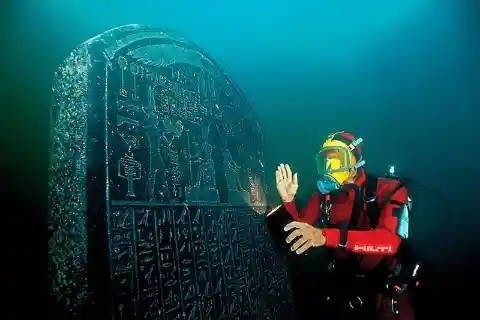
Here, he is seen admiring the hieroglyphs that seem to have remained in perfect conditions. It's amazing to see that the elements haven't damaged this plaque.
#7. Preservation Is A Challenge
One of the things that the crew didn't see eye to eye on was the following. Since the relics had been underwater for so long, getting them out of the water implied taking a risk.

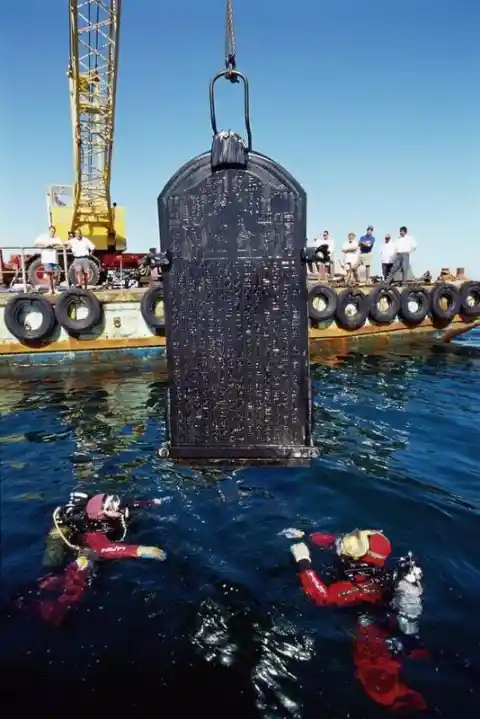
The changes in pressure, among other conditions, are likely to damage the artifacts. Fortunately for the team, they managed the rescue most of the items in pristine conditions.
#6. Ancient Coins Reveal A Lot
As was previously mentioned, historians believe that the lost city was a great port. Traces of this were found everywhere. From the grand structures, to the location of the city, this settlement was the ideal spot for trade.
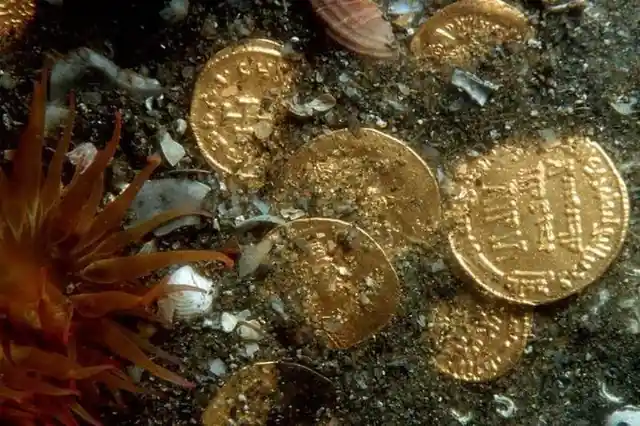

Let's not forget that they also discovered several golden coins. According to historians, it's very likely that these were used as currency back then, since every port city had its own form of currency.
#5. The Museum's Dream
Let's take a look at some other statues discovered by the team. Here, we can see the face of a man with a desperate expression on his face carved in stone. Can you guess who this man is?
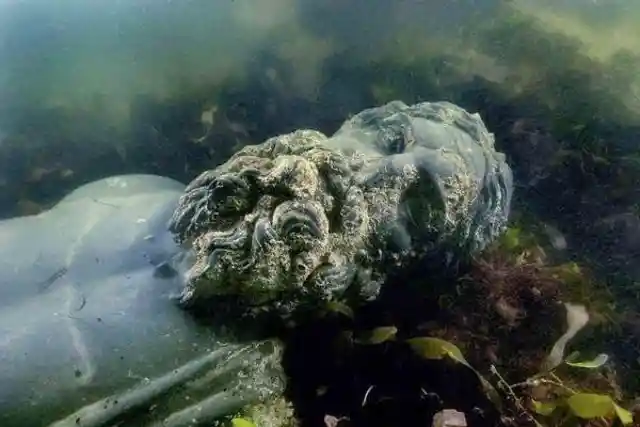
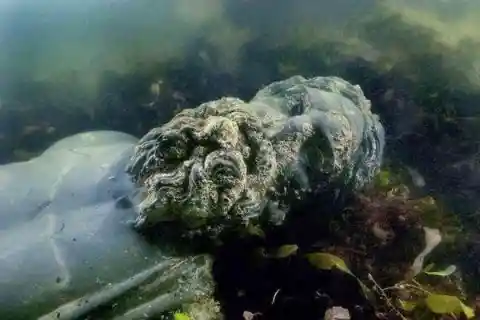
Historians soon concluded that this was the portrayal of the god Osiris. If this weak statue can actually make it intact to a museum, it will surely attract hundreds of visitors from all over the world.
#4. Careful Explorations
GIven that so many amazing artifacts were able to be saved from the depths of the ocean, the team was faced with the challenge of documenting every single square inch of the deep blue.
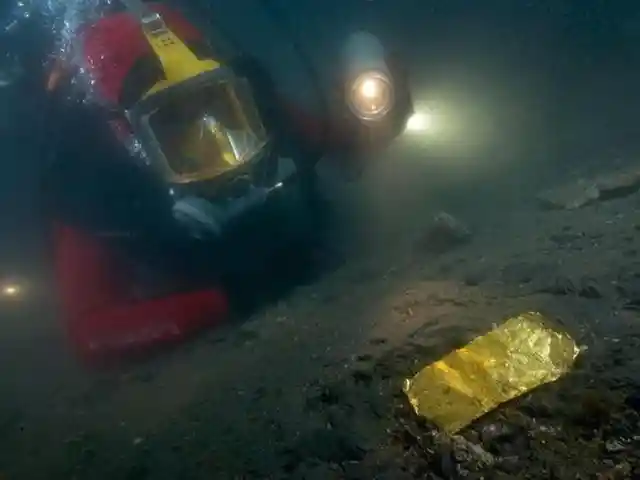
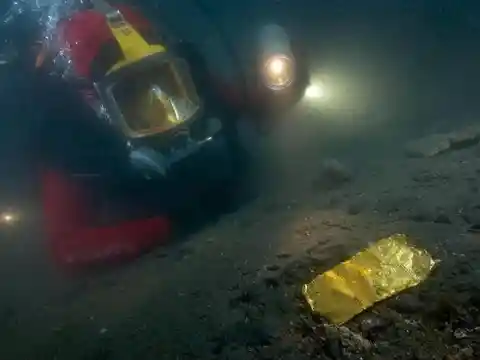
After all, they had found so many treasures, that there was a high chance they had left something accidentally behind. The research project was far from over.
#3. Valuable Information
Although most of the findings were aesthetic and beautiful sculptures or worthy pieces of gold, not all of them were pretty to the eye. For instance, they found the remains of a few human bodies.
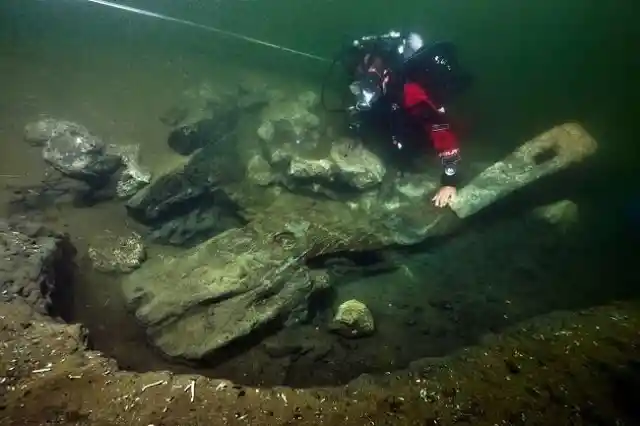
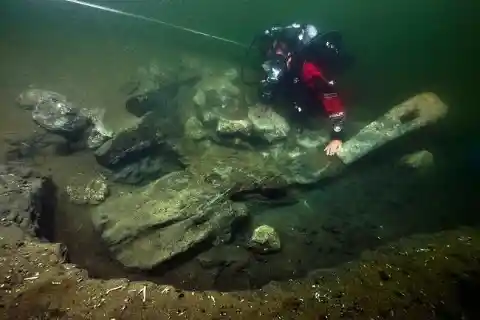
Some stuff that the scientists found really helped historians gain insight on the layout of the former city and the way the buildings were set up.
#2. A Curious Lamp
The image below depicts a strange-looking lamp. In case you're wondering, a genie isn't hidden inside it. The fact is that this is an oil lamp.
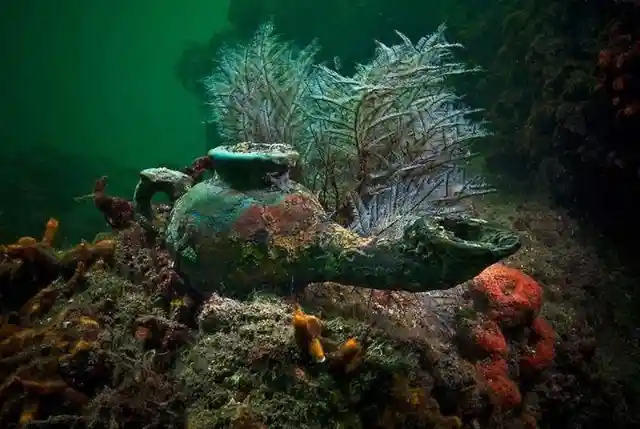
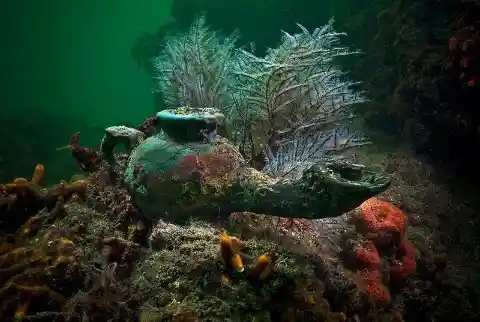
The passing of time apparently haven't damaged the beauty of this artifact. It's a pity they had to take it out of its new home, since it looks like it belongs there.
#1. The Ocean's Numerous Mysteries
One thing that this whole experience has taught us, is that the ocean is filled with unanswered questions yet also some answers. Its just a matter of looking where nobody has ever looked before.

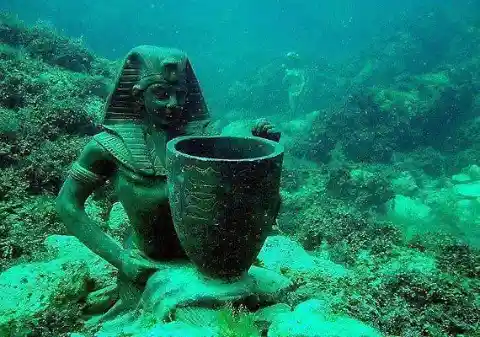
Imagine all the objects that scientists and archaeologists have yet to discover in the depths of the sea. After all, nearly 90% of the world's seas are yet to be discovered!